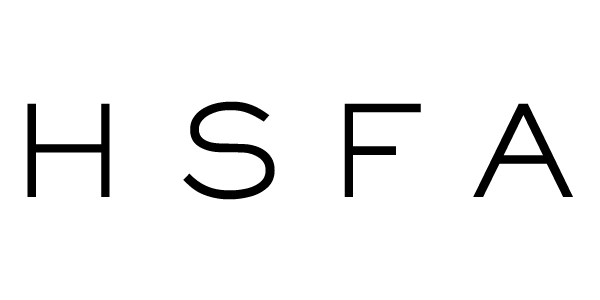Ánima Correa
Ambergris
Opening reception Sunday February 12, 3-6pm
On view February 12 - March 26
PRESS: Artforum | Contemporary Art Review LA | Contemporary Art Library | Tzvetnik
Comunicado de prensa en español.
Hunter Shaw Fine Art is pleased to present Ambergris, a solo exhibition by Los Angeles based interdisciplinary artist Ánima Correa. Ambergris consists of a dynamic installation of ten paintings and three sculptures, a flowing circuit alluding to the ten arms and three hearts of a squid. This subject appears throughout the works on view, providing an unlikely but apt lens through which the artist relates specifics of her own family history to greater geopolitical narratives, elucidating the complex interrelationship between extraction, surveillance, migration and technology.
Created and expelled from the bile duct in the intestines of sperm whales, ambergris is an organic compound formed around undigested squid beaks. Prized for its use in fragrances and cosmetics, ambergris is a resource that cannot be directly extracted. This waxy substance serves as an inspiration for the corrupted organic matter squeezing through Correa's sculptures. Criss-crossing the gallery space from floor to ceiling is a trio of large structures based on the submarine signal repeater cables that carry digital data across vast stretches of open sea. These works bring to light a critical conduit for telecommunications and geopolitical relationships that is usually invisible, submerged on the ocean floor. Network cables, dehydrated pacific kelp and mylar circuitry are tangled together in organized loops blending biomorphic and manufactured forms.
Within these objects Correa plumbs a rich network of associations connecting her father’s migration from Chile to the US during Pinochet’s dictatorship, with the flows of information, material resources, and power within contemporary global technocracy. Correa's father is a biophysicist studying the nerve cell impulses of the Humboldt squid, which function similarly to the fiber optic cables found in undersea signal repeaters. Coincidentally, Humboldt squid also possess a migration pattern up and down the Pacific coastline of the Americas, which aligned with the rise and fall of Pinochet's dictatorship. The blood of squids and other cephalopods is blue, due to its high copper content. Chile is the world's leading exporter of raw copper, much of which is used to fabricate the infrastructure of the surveillance economy of data, including undersea repeater cables.
These themes are further extrapolated in the artist’s ongoing series, Espejitxs (little mirrors). Each of these highly-detailed and intimately-scaled paintings depict a tightly-cropped view of an individual cephalopod eye. Reflected within the eyes are images sourced from contemporary media, signifiers of a paradigm obsessed with omniscience and control: an open pit mine, a police siren, a graphic from Palantir’s user interface to name a few. These unsettling and meticulously rendered paintings are confounding to behold: one does not immediately know what one is looking at, despite the evident representational characteristics. In an ongoing conversation with the divinatory tradition of scrying, or using organic materials as a source of psychic image-making, Espejitxs mirror worlds contained within reflective capsules, a nod to the radical imaginary through both the physiology of cephalopods and the metaphysical properties of painting as a medium. Probing the literal and figurative associations of optics, Correa simultaneously interrogates notions of surveillance, perception, visibility and camouflage. Each of Espejitxs is painted with a distinctly unique palette, relating to the chromatophores that allow cuttlefish, squid and octopuses to change color and blend into their surroundings. Viewed as a suite, this symphonic interplay of color points to a kind of symbiotic surveillance, a community helping each other stay safe.
Throughout Ambergris, Correa endeavors to visualize what decolonial scholar Macarena Gomez-Barris has termed “submerged perspectives.” In her 2017 book, The Extractive Zone: Social Ecologies and Decolonial Perspectives, Gomez-Barris describes the “extractive view” as a vertical model of seeing that has spawned the surveillance and resource mapping technologies that consolidate corporate and colonial power through visual regimes. On the other hand, submerged perspectives evade the extractive view, emerging from the transitional and intangible spaces that cannot be contained by the ethnocentrism and speciesism of scientific objectification and extractive technocracies.* What cannot be seen - what is obscured - cannot be bound by colonial frameworks. Poetically blending the abstract with the concrete, Correa calls attention to the revolutionary potential of intentional illegibility.
Ánima Correa lives and works in Los Angeles. She received a BA in Urban Studies from Eugene Lang The New School for Liberal Arts, New York, NY (2014) and a BFA in Fine Arts from Parsons The New School for Design, New York, NY (2013). Correa also attended The Mountain School of Arts in Los Angeles, CA (2021), and Dark Study (2021). Her work has been exhibited at Chateau Shatto, Los Angeles, CA; HOUSING, New York, NY; Alyssa Davis Gallery, New York, NY; Master Piss Galeria, Lima, Peru; and Court Space, Los Angeles, CA.
* See: Gomez-Barris, Macarena. The Extractive Zone: Social Ecologies and Decolonial Perspectives (2017); Duke University Press, p. 5
Special thanks to: Don Edler, Dorian Lord, Sargon Saadi, Chanel Khoury, Pablo Latorre and Tom Barron, Ana Correa, Magdalena Bezanilla, Pilar Herr and Elizabeth Contreras



































